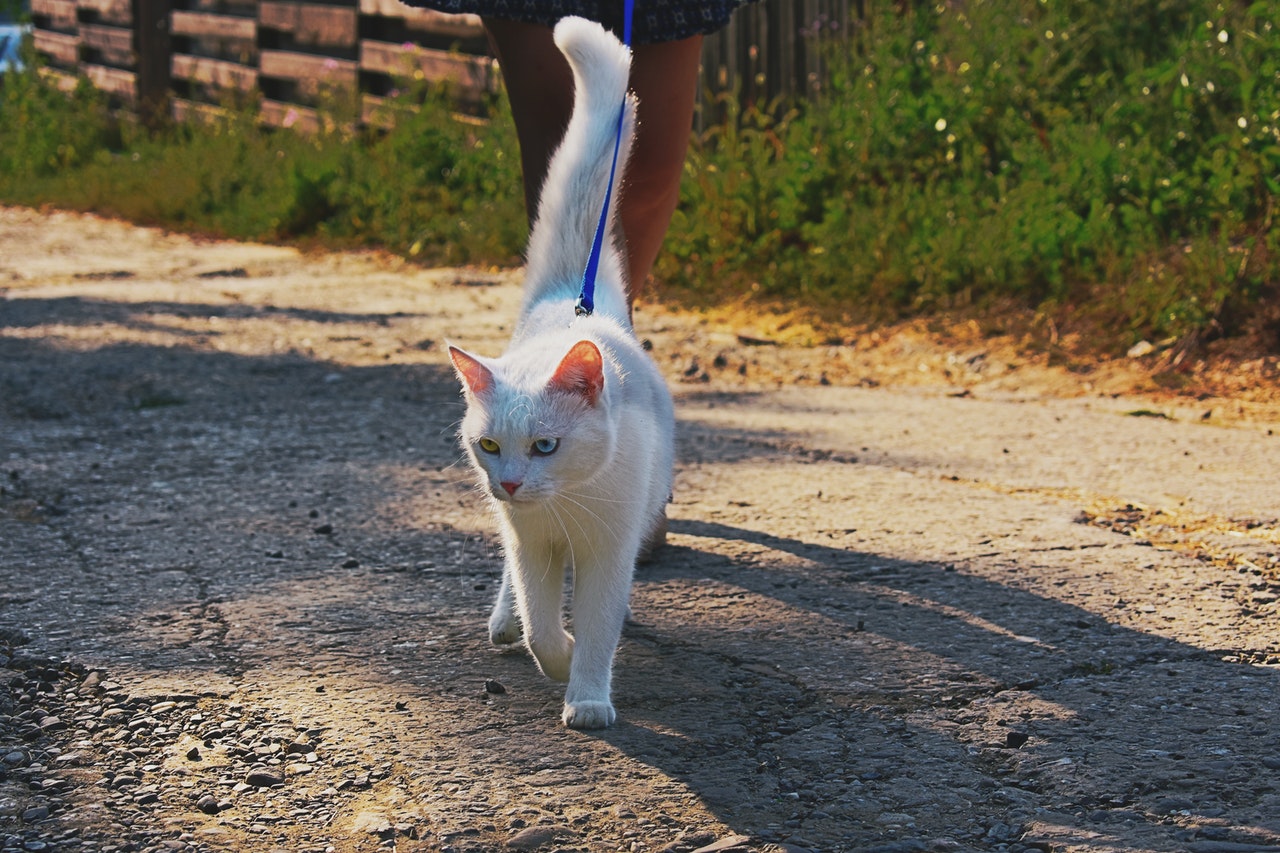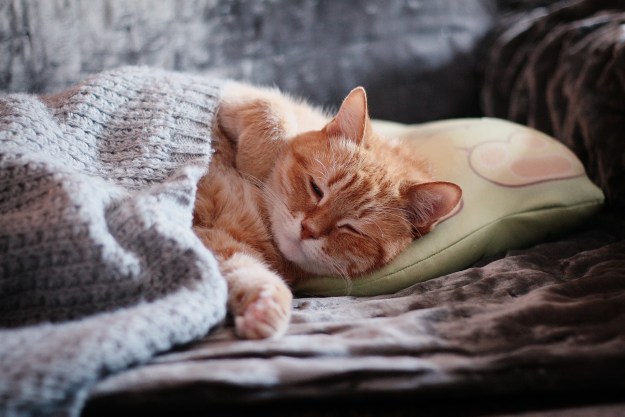
Contrary to popular belief, cats don’t actually need to go outside. In fact, the Animal Humane Society says indoor cats are much safer and happier. Allowing your cat to wander freely may seem like the loving thing to do, but letting your cat go outside is risky business. From antifreeze leaks and unknown toxins to strange dogs and speeding cars, the world outside poses many threats to unsupervised cats. Walking cats on leashes is the perfect solution. Your cat will be able to explore the neighborhood, and you’ll be able to keep your fur baby safe. Let’s look closer at how to leash-train a cat.
Should all cats be leash trained?
According to cat behaviorist Jackson Galaxy, leash-training your feline friend “provides an extra dose of exercise for your cat.” He also says, “If your cat is one who typically avoids hanging out anywhere near the front door and doesn’t exhibit any interest in the great outdoors — or who even might be fearful of going outside — don’t bother.” However, if your cat attempts to bolt outside each time you leave the house, leash training provides your cat with the best of both worlds. Whether you’ve adopted a former stray who loves the outdoors, or you simply want your cat to safely accompany you in your backyard, training your cat to walk with a leash creates ample opportunities for fun in the sun.
What you’ll need to leash-train your cat
Leash-training a cat is vastly different from leash-training a dog. While dogs are typically eager to go outside, your cat may need more time to adjust. Here’s what you’ll need to begin training your cat:
- A harness
- A leash
- Your cat’s favorite treats
We recommend using a cat harness specifically designed for cats instead of using a harness meant for small dogs. Cats and dogs are shaped differently, and a well-fitting harness helps distribute pressure evenly over your cat’s body. If the harness is too tight, it could potentially choke your cat. If it’s too loose, your frisky feline may be able to wriggle out of it. When it comes to a leash, opt for something soft and flexible, avoiding potentially dangerous retractable leashes. You want your cat to associate her harness and leash with something enjoyable. Giving your fur baby treats during the training phase is a great way to help her make the connection.

Leash training in a few easy steps
Some cat parents say it’s impossible to train a cat, but we suspect they were going about it the wrong way. Training requires patience and time, and not all cats warm up to the idea of wearing a harness. That’s OK, too. Ready to start leash-training your cat? Let’s go over the steps.
Step 1: Allow your cat to mark her territory
When you purchase a harness for your cat, you probably want to rush home, put on the harness, and go out for an adventure. Not so fast. Give her time to get comfortable around her harness first. Hand your cat a treat and play with her while holding the harness. Allow her to sniff at her new harness. You can also try setting it down and letting her play with it. She may rub her face against it, marking it with her scent. Now that the harness smells like her — and she associates it with treats and fun — she’ll be less likely to fear wearing it.
Step 2: Start off indoors
Once your cat is more familiar with her harness, it’s time to let her try it on. Approach her when she’s in a calm, friendly mood. Give her plenty of attention, speak in a reassuring tone, and bribe her with a treat or two once the harness is on. Let her wear the harness for a few minutes at first. As she grows more comfortable, increase the amount of time she wears her harness. Safety tip: Always supervise your cat while she’s wearing her harness.
Step 3: Let her walk herself
By now, your cat is much more content wearing her harness, so it’s time to clip on the leash. Let her walk around the house with the leash attached but don’t hold on to it. Giving her freedom of movement keeps your feline friend relaxed, so she’ll be less likely to associate her leash with feeling agitated.
Step 4: Take her for a walk inside the house
Holding the leash loosely, follow your cat as she wanders around your home. This helps her adjust to tension on the leash without immediately venturing outside. Make sure to praise your cat for being a good girl, and give her a few treats as a reward.
Step 5: Go for an outdoor adventure
At this stage, you can safely take your cat outdoors. Wait for a mild day with sunny skies and go for a brief outing. Allow your cat to explore to her heart’s content but remember to take her inside if she shows signs of distress.

Teaching your cat to walk on a leash takes a bit of trial and error. Remember to give her treats when she does something right instead of punishing her when she misbehaves. You don’t want her to associate her harness with being scolded. With patience, persistence, and a little luck, you’ll be able to leash-train your cat in no time.
Editors' Recommendations
- How long do dachshunds live? The truth might surprise you
- How to tell if your older dog’s health decline means the end is near
- How much water should your puppy drink in a day? Here are the factors to consider
- Where to put a dog crate in your house depends on these important factors
- Why is my puppy not eating? Find out why and how to help them thrive




